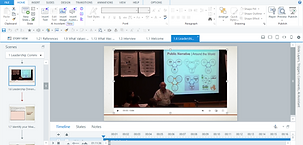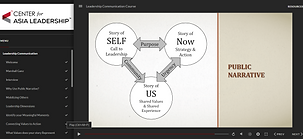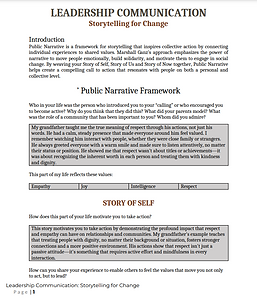

Leadership Communication
The Center for Asia Leadership (CAL) is a non-profit organization that offers leadership coaching and training programs for professionals, government ministries, and youth leaders throughout Asia. By leveraging graduate teaching fellows from Harvard and leadership principles taught there, CAL provides high-quality, values-driven leadership training grounded in human-centered design.
Overview
Role
As the Director of Online Learning, I led the design, development, and launch of CAL's online learning platform, including this course. Initially created for in-person conferences, I adapted the course for asynchronous learning through an online LMS.
Audience
CAL's clients range from working professionals looking to develop new skills, to government officials seeking to refine their leadership abilities, to college students just beginning to explore their potential. As a result, CAL courses must be designed to be accessible and relevant to a diverse audience with varying needs.
Tools
Articulate Storyline 360
PowerPoint
Canva
Online Resources
The Problem
CAL's primary business model involves conducting in-person conferences and training courses across Asia, which limits its reach to specific regions and timeframes. To expand its customer base and offer greater accessibility, CAL needed to provide services that could be accessed anytime, anywhere.
The Solution
I was brought on to lead the development and implementation of CAL's online learning platform, transforming its in-person courses into online asynchronous offerings. Throughout this process, I oversaw the design, production, and launch of all its online courses, including the Leadership Communication course.
Based on Prof. Marshall Ganz's Public Narrative framework, this course provides a storytelling approach designed to inspire collective action by connecting individuals to a shared cause. This framework is commonly used in social movements and leadership to build a narrative that galvanizes people around a common purpose.
My Process


Converting the Leadership Communication course from an in-person session to an online format involved ensuring that the core value of constructing a personal narrative remained intact, allowing users to create meaningful stories that resonated with their communities.




01
Outlining the Framework
The Public Narrative framework has been instrumental in mobilizing movements and communities to tackle challenging issues. I organized the key elements of the framework in a clear and accessible manner, making it easy for users to grasp and apply.
03
Constructing Their Narratives
To offer users a practical way to craft their narratives, I utilized text variables in Storyline 360, allowing them to write their story of self, us, and now directly within the course.
02
Public Narrative in Practice
To illustrate how public narrative can be effectively used, I highlighted Barack Obama's 2004 convention speech as an example and asked users to identify where he incorporated each element of the Public Narrative framework.
04
Preserving their Stories
To ensure users could retain their work, I created a PDF output that automatically generated upon course completion. This PDF included all their completed stories, as well as a blank template for creating new narratives if users wanted.
Results & Takeaways
During development and after the launch, the Leadership Communication course received positive feedback for its design, which made the concepts easy to understand, and for its ability to lay a strong foundation for creating a meaningful personal narrative.
However, since developing a public narrative is inherently a creative process and the online course is asynchronous, users felt that it lacked the interactive feedback that the in-person program provided. Without facilitators or peer input, participants found the course less impactful compared to the in-person experience, where they could receive immediate feedback from both facilitators and fellow participants.
My key takeaway from this course is that the mode of learning should align with the subject matter and skills being taught to maximize the value for participants. Soft skills, such as leadership communication, are best practiced in a group setting where real-time feedback and collaboration can take place.
